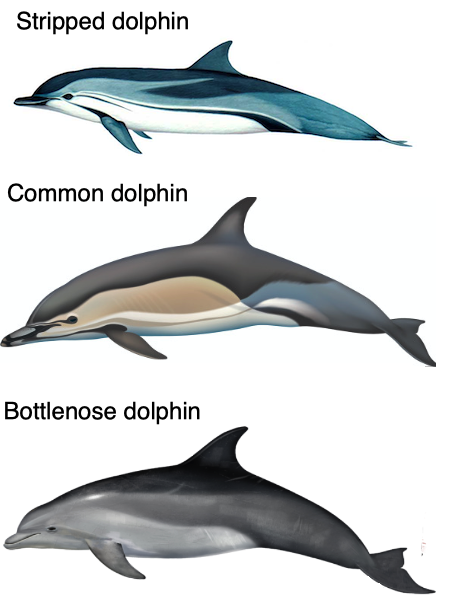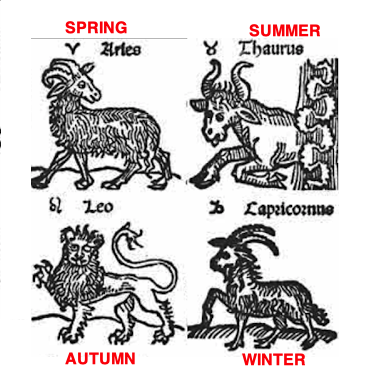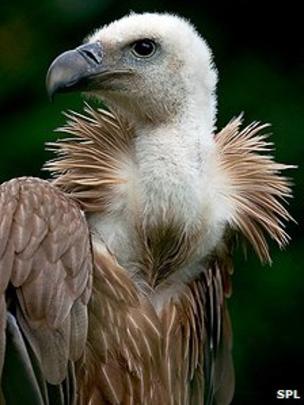
Thread: This is the famous Minoan "dolphins fresco" from Knossos, Crete, dated to 1500BC...
Why is it important do determine what type of dolphins were depicted on this fresco?
Spoiler: animal calendar markers...🙂
Why is it important do determine what type of dolphins were depicted on this fresco?
Spoiler: animal calendar markers...🙂

In my thread about the strange "dolphin attacking ibex goat" Minoan seal, I talked about different types of dolphins that live in Mediterranean sea
https://twitter.com/serbiaireland/status/1446551323772653584
Here they are again...So which one of these dolphins was depicted on the above Minoan fresco? I would say that we can pretty much immediately discard the Bottlenose dolphin because of the color... 

The other two look quite similar. But if we look at the central line, on the dolphins depicted on the fresco, we can see that the only dolphin that has the same feature is the Stripped dolphin.
Add to that that the Stripped dolphin is the most abundant dolphin species in the Mediterranean, I think that the dolphins depicted on the Minoan fresco are the Stripped dolphins.
Yeeeey! Now what?
Well as I said in my thread about the Minoan swallows fresco, these animal depictions should be treated as animal calendar markers...
Well as I said in my thread about the Minoan swallows fresco, these animal depictions should be treated as animal calendar markers...
https://twitter.com/serbiaireland/status/1446966196566478850
Soooo...
Well, here is a very interesting Minoan sealstone discovered at Akrotiri, Thera, and dated to the 18th c. BC. It depicts a griffin suckling a dolphin...

Well, here is a very interesting Minoan sealstone discovered at Akrotiri, Thera, and dated to the 18th c. BC. It depicts a griffin suckling a dolphin...


The pic of the seal is from "Thera, Pompeii of the Ancient Aegean" by Christos Doumas (researchgate.net/publication/27…).
The pic of the seal drawing is from "Minoan Sacrificial Ritual" by Nanno Marinatos (eclass.uoa.gr/modules/docume…)
The pic of the seal drawing is from "Minoan Sacrificial Ritual" by Nanno Marinatos (eclass.uoa.gr/modules/docume…)
The author of the "Minoan Sacrificial Ritual" paper says this about this seal: "The dolphin's speed, size and intelligence must have impressed Minoans who attributed special powers to it and made it companion to the divinity in similar manner as the lion and the griffin..."
Hmmmm...Is there anything else that could connect dolphins, lions and griffins...Could these all be animal calendar markers pointing a the same time of the year maybe?
I think so...Animal calendar markers mark the time when the depicted animal either mates, gives birth or rarely, migrates, goes to hibernation...
Let's check our real and imaginary animals mating seasons... 🙂
Let's check our real and imaginary animals mating seasons... 🙂
Have a look at this:
Common bottlenose dolphin (Tursiops truncatus) May - Aug, peak Jun/Jul
Short-beaked common dolphin (Delphinus delphis) May - Sep, peak Jul/Aug
Striped dolphin (Stenella coeruleoalba) Jul - Oct, peak Sep
Common bottlenose dolphin (Tursiops truncatus) May - Aug, peak Jun/Jul
Short-beaked common dolphin (Delphinus delphis) May - Sep, peak Jul/Aug
Striped dolphin (Stenella coeruleoalba) Jul - Oct, peak Sep
So, the striped dolphin mates from beginning to the end of autumn (Jul/Aug - Oct/Nov)...Which means that it could be used as a calendar marker for beginning of autumn, Jul/Aug (beginning of its mating season) or for autumn in general (Jul/Aug - Oct/Nov)... 

What about lions? I think we are in luck here...The main mating season of Eurasian lions starts at the beginning of autumn, Jul/Aug and spans the whole of autumn, (Jul/Aug - Oct/Nov)... 



The main mating season of Eurasian lions starts at the beginning of autumn, Jul/Aug and spans the whole of autumn, (Jul/Aug - Oct/Nov)...
Which is why lion is used as an animal calendar marker known as Leo, which marks Jul/Aug
Which is why lion is used as an animal calendar marker known as Leo, which marks Jul/Aug
https://twitter.com/serbiaireland/status/1436708768901894154
This is also why lion is the symbol of autumn in general (Jul/Aug - Oct/Nov)...
oldeuropeanculture.blogspot.com/2019/10/symbol…
oldeuropeanculture.blogspot.com/2019/10/symbol…

What about griffins? Eeeee, I can hear you say...Griffin!!! Mythical monster!!! Not a real animal...Actually griffin is not a mythical animal, but a complex animal calendar marker for autumn (Jul/Aug - Oct/Nov). Minoan griffin (there are different griffins)🙂 

Minoan griffin consists of
Lion, animal calendar marker known as Leo, marks Jul/Aug, cause the mating season of Eurasian lions starts in Jul/Aug
Vulture, animal calendar marker known as Eagle, marks Oct/Nov, cause the mating season of Eurasian vultures starts in Oct/Nov

Lion, animal calendar marker known as Leo, marks Jul/Aug, cause the mating season of Eurasian lions starts in Jul/Aug
Vulture, animal calendar marker known as Eagle, marks Oct/Nov, cause the mating season of Eurasian vultures starts in Oct/Nov


This is an ancient symbol and I talked about it in this thread
https://twitter.com/serbiaireland/status/1447317538908540934
So all three of these real or imaginary animals can be used as animal calendar markers for autumn (Jul/Aug - Oct/Nov).
So why would Minoans care about any of this? I think Hesiod can answer this question. Writing in the 8th century BC, he says that:
So why would Minoans care about any of this? I think Hesiod can answer this question. Writing in the 8th century BC, he says that:
"Fifty days after the solstice,
when the season of wearisome heat is come to an end,
is the right (best) time for men to go sailing"
This is at end of July beginning of August. In Leo...At the beginning of the mating seasons of lions and striped dolphins...And griffins 🙂
when the season of wearisome heat is come to an end,
is the right (best) time for men to go sailing"
This is at end of July beginning of August. In Leo...At the beginning of the mating seasons of lions and striped dolphins...And griffins 🙂
This is the time when Romans celebrated the Neptunalia. Apparently the authorities are not sure why Romans celebrated Neptune at exactly that time of the year. I will let authorities ponder this further...
Here I will propose that maybe Minoans also celebrated sea god in Leo...
Here I will propose that maybe Minoans also celebrated sea god in Leo...
Here is another amazing Minoan fresco. It is known as "Minoan Admirals Flotilla Fresco", and was found Akrotiri, Thera (Santorini) and was dated to c. 1613 BC. It shows a flotilla sailing out of the harbor as part of some kind of celebration... 

This is a restored detail of this fresco showing the admiral's ship. You can see that the hull of the ship is decorated with lions and striped dolphins...Why?
In "Minoan Sacrificial Ritual", professor Nanno Marinatos tries to explain this decoration like this:
In "Minoan Sacrificial Ritual", professor Nanno Marinatos tries to explain this decoration like this:

"Let us now look at some representations where the dolphin can be designated as an aggressor by virtue of analogy, because it is shown together with other predatory animals. On the major ship of the fleet...there appear emblems of aggression: lions and dolphins."
"The association of the two would be problematic, were it not for the observation made above, that the dolphin is itself a hunter which makes it equivalent to a lion. Thus, the two animals represent aggression in two domains, the land and sea."
Hmmmmm, well you could argue that...But maybe these two animals are depicted together because this flotilla is part of the Minoan version of Neptunalia...Celebration of the Minoan sea god, whatever his name was...
Which takes place in Leo, at the beginning of autumn, at the beginning of the mating season of both Eurasian lions and striped dolphins...And griffins 🙂 At the best time to sail the Mediterranean sea...
That's it...More about animal calendar markers found in ancient cultures, start here oldeuropeanculture.blogspot.com/p/animal-solar… then check the rest of the blog posts I still didn't add to this page, and finally check my twitter threads I still didn't convert to blog post...I am 7 months behind now
• • •
Missing some Tweet in this thread? You can try to
force a refresh












